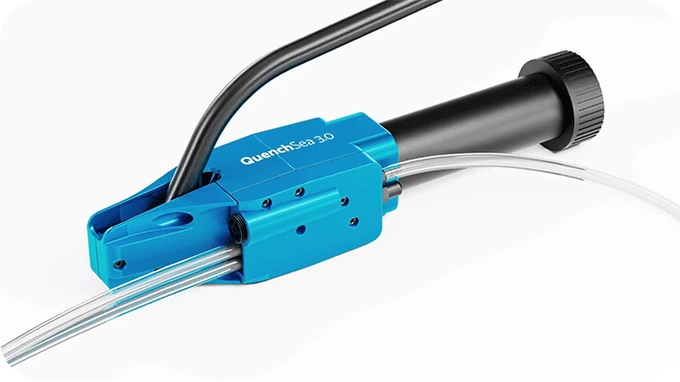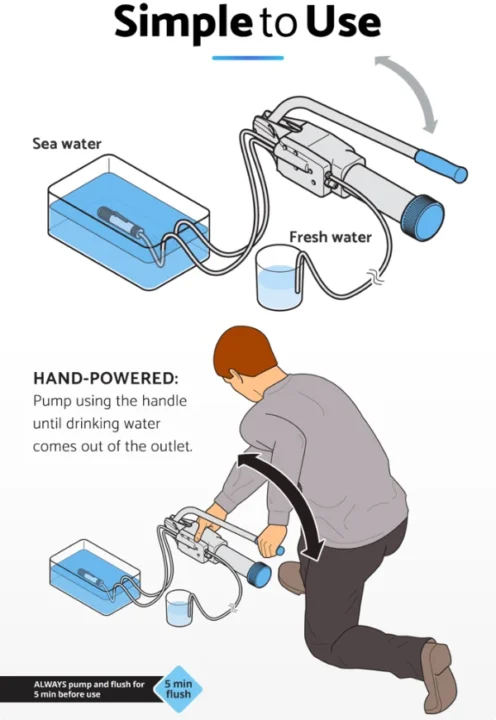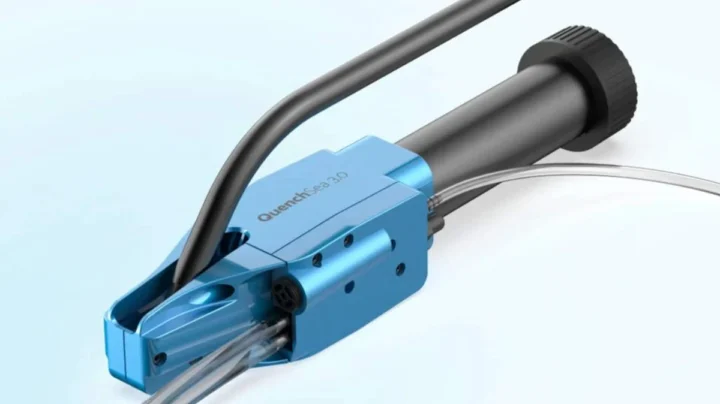It is paradoxical that, surrounded by water, sailors lost at sea can die of thirst. To avoid this situation, the portable water maker was designed, powered only by the strength of the user’s muscles. Desalinate… that might be useful!
QuenchSea 3.0 - manual desalinator
The device is currently the subject of a Kickstarter campaign and is being developed by Hydro Wind Energybased in the United Kingdom. The original, hand-powered model was launched in 2020, followed by the smaller, deep-sea QuenchSea Reel in 2023.
In the initial model, users activated a lever that forced seawater through a triple filtration system and a reverse osmosis membrane. Water was removed from the ocean through a silicone tube and, after being purified, it was distributed through another tube into a bottle or other container.
This system promised to remove salt, viruses, bacteria, microplastic particles and other contaminants from seawater, with an average yield of more than 2 liters per hour, reaching up to 3 liters in ideal conditions. The resulting drinking water met World Health Organization (WHO) quality standards.

Greater efficiency and ease of use
The QuenchSea 3.0 model uses the same basic concept, but adds a pressure increase mechanism and an energy recovery system. This not only facilitates pumping, but also speeds up the desalination and filtration process, achieving an impressive yield of 6 to 8 liters of drinking water per hour.
The company claims that the purified water will contain less than 1,000 milligrams of total dissolved solids (TDS) per liter, which meets WHO standards.
In most cases, oddevice reduces TDS levels to a range of 300 to 500thanks to its activated carbon filtration system, which also eliminates unpleasant flavors and odors.

Durability and maintenance
Both the reverse osmosis membrane and the filter cartridge require periodic replacement. Depending on factors such as salinity and seawater temperature, a membrane has an estimated useful life of 300 liters of drinking water.
This maintenance is essential to guarantee the efficiency of the device.
Accessibility and availability
If QuenchSea 3.0 goes into production, will be available for a contribution of 250 dollars (about 240 euros) during a Kickstarter campaignwith an expected retail price of US$500 (around 480 euros).
Membrane replacements will cost $30 per pair, while filter cartridges will be priced at $20 per pair.

Ecological impact and usefulness in critical situations
This device not only represents a essential tool for emergency situations or sea travel, but also has potential for applications in areas with limited access to drinking water.
Furthermore, by operating without the need for electricity, it offers a sustainable and environmentally friendly solution.
With this desalination technology, a window is opening for the creation of innovative solutions that combine efficiency, sustainability and accessibility, helping to face the global challenges of drinking water scarcity.
Source: pplware.sapo.pt


